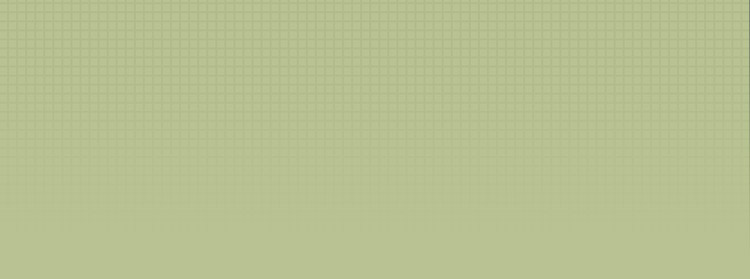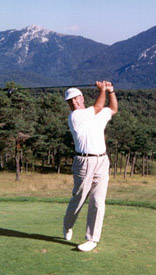Tip Of The Month
It is my objective to have each student return the clubhead back
to a square position at impact. However, there are two other factors
that are also important, the correct swing path and the proper angle
of approach. So when you think about hitting a golf ball, it's all
about paths and angles. We must therefore talk about the correct takeaway.
You see, the there are two kinds of games you can play. One is called
an on-line game such as bowling or croquet. In these games you stand
on the line and make a motion that is straight back and straight through
on a vertical up and down path. The other game is a side-on game such
as golf and baseball. To hit a baseball you stand to the side of the
ball and just make an around swing. But to hit a golf ball, which
is positioned on the ground and you are standing to the side, there
must be a motion that has some around and some up and down. It is
the blending of the two that makes golf so challenging. Therefore,
we must start by directing the club, hands and arms on the correct
path to accomplish this blend.
Swing Mechanics :: Backswing
We are only going to talk at this time about the backward path called
the backswing. The arms, hands, shaft and club head must be directed
on the proper path by the upper left side to achieve the correct backswing.
The culprit in the golf swing is the right side overpowering the movement
at the wrong time. To minimize this wrongful intervention, each golfer
must swing the club on the correct path to the top. I call this path
the Swing Plane Zone (SPZ) as illustrated. When the shaft of the club
first reaches a point on the backswing that is horizontal to the ground,
the hands, arms and clubhead should be in a straight line inside the
SPZ as illustrated (SEE IMAGE A). At
this point in the swing if you draw a perpendicular line from the
hands to the ground, this line should fall somewhere between the right
toe and the middle of the right foot.
When the shaft and clubhead ventures inside of the SPZ, this will
cause a lifting of the arms and the flattening of the shoulders resulting
in the arms being on a much more vertical plane than the shoulders
(SEE IMAGE B). However, if the arms continue
to follow the rotation of the shoulders you end up with a swing that
is below the plane and too shallow. The exact same scenarios can occur
if the shaft and clubhead venture outside of the SPZ
(SEE IMAGE C). What we are trying to avoid is a two-plane swing
whereby the arms and shoulders are on different planes. They should
both be on the same plane for the most consistent ball striking because
this is what all the great players have done.
Remember, we are only talking about the first 3 or 4 feet of the backswing
to accomplish the correct position. If the left shoulder triggers
the backswing at a 90-degree angle to the spine and the hands stay
close to the right thigh with the shaft and clubhead remaining slightly
in front of you, the correct position will be accomplished.
The golf swing has three parts: a backswing, a forward swing and a
finish. We are only focusing on the takeaway at this time in order
to help create the proper path and angle. Wouldn't it be nice if the
exact start produced the correct backswing that in turn caused the
forward swing to be a perfect happening. Because the fewer things
a golfer has to think about once a motion has started the more enjoyable
this game becomes.





